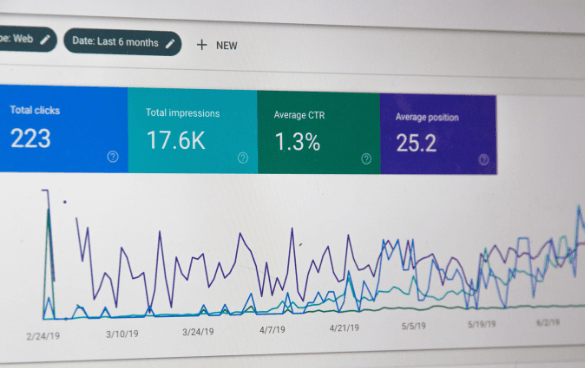Using Remarketing in Google Analytics: A Comprehensive Guide
Utilizing remarketing in Google Analytics supplies services a calculated side in getting to out to possible clients. This guide will certainly shed light on the vital actions included in harnessing the full potential of remarketing in Google Analytics, leading to improved marketing end results.
Comprehending Remarketing in Google Analytics
Remarketing in Google Analytics enables services to strategically target users who have actually previously interacted with their internet site or mobile application. By leveraging information from Google Analytics, companies can create tailored remarketing lists based on customer actions, such as web pages gone to, actions taken, or specific objectives accomplished. This effective device enables companies to re-engage with customers who have shown passion in their product and services, ultimately increasing the likelihood of conversion.
Comprehending the different kinds of remarketing strategies is essential for an effective project - What Is “Remarketing” In Google Analytics?. Google Analytics provides numerous choices, consisting of typical remarketing, dynamic remarketing, and remarketing lists for search ads (RLSA) Each kind offers a special function and can be customized to satisfy specific advertising objectives
In addition, analyzing the performance of remarketing campaigns is vital for maximizing results. Google Analytics supplies important insights right into the performance of various remarketing strategies, allowing companies to make data-driven choices and fine-tune their targeting approach. By continually monitoring and readjusting remarketing initiatives based upon analytics data, companies can make the most of ROI and drive success in their advertising campaigns.
Establishing Up Remarketing Campaigns

After setting up audience checklists, the next action is to connect Google Analytics with Google Ads. By connecting these two platforms, services can effortlessly transfer target market lists from Google Analytics to Google Advertisements for remarketing objectives. This integration permits for more accurate targeting and much better campaign efficiency.
When the accounts are connected, services can create remarketing projects in Google Advertisements utilizing the target market provides previously defined in Google Analytics. These projects can be customized with details advertisement creatives, messaging, and bidding approaches to effectively re-engage with past site visitors and drive conversions. By following these actions, services can take advantage of the power of remarketing to boost their marketing initiatives and raise ROI.
Using Target Market Segmentation Approaches

Predefined sectors in Google Analytics allow you to promptly examine usual target market categories fresh users, returning customers, or individuals that completed a specific goal on your site. Customized sectors, on the various other hand, allow you to create unique segments based upon specific requirements that are vital to your company find this purposes. Dynamic remarketing checklists automatically readjust based on individual behavior, showing tailored ads to customers who have actually interacted with your website specifically ways.
Studying Remarketing Efficiency Metrics
Upon examining the performance of remarketing projects in Google Analytics, the analysis of crucial performance metrics supplies useful insights right into target market interaction and conversion prices. By diving into metrics such as click-through rates (CTR), conversion prices, cost per purchase (CERTIFIED PUBLIC ACCOUNTANT), and return on advertisement spend (ROAS), online marketers can evaluate the success of their remarketing efforts. CTR shows the percentage of users who clicked on the advertisement after seeing it, mirroring the advertisement's importance and allure. Conversion prices measure the percent of customers who finished a wanted activity, such as making an acquisition, after clicking on the ad. CPA discloses the average price sustained for each conversion, aiding examine project profitability. ROAS, on the various other hand, evaluates the revenue generated for each dollar spent on marketing. Examining these metrics allows marketing professionals to optimize campaigns, improve audience targeting, and allocate budgets properly to boost overall remarketing performance.
Optimizing Remarketing Methods
When refining remarketing strategies in Google Analytics, concentrating on audience segmentation is extremely important for accomplishing campaign success. By splitting your target market into certain sections based upon their behavior, demographics, or passions, you can customize your ads a lot more efficiently to each group. This targeted technique raises the probability of engaging customers who have already revealed rate of interest in your product and services, causing higher conversion rates.
Another vital facet of maximizing remarketing strategies is continually testing and refining your campaigns (What Is “Remarketing” In Google Analytics?). A/B screening various advertisement creatives, messaging, or offers can assist you determine what reverberates finest useful link with your audience and drives the most conversions. By analyzing the performance of these examinations in Google Analytics, you can make data-driven choices to enhance your remarketing initiatives additionally
Furthermore, leveraging dynamic remarketing can significantly boost your campaign results. This attribute permits you to reveal personalized advertisements to users based upon their past interactions with your web site, showcasing services or items they have previously watched. By providing customized content to customers based upon their rate of interests and behaviors, vibrant remarketing can aid enhance engagement and drive conversions.
Final Thought
Finally, taking advantage of remarketing in Google Analytics is a strategic technique to target customers who have actually formerly involved with a web site. By developing tailored audience lists and utilizing audience division approaches, companies can enhance remarketing advocate boosted conversion prices. Examining efficiency metrics and continually maximizing methods are crucial for making best use of the effectiveness of remarketing initiatives.
Google Analytics uses different alternatives, consisting of common remarketing, vibrant remarketing, and remarketing checklists for search ads (RLSA)After setting up target market listings, the following action is to connect Google Analytics with Google Ads. By linking these 2 systems, companies can effortlessly transfer target market listings from Google Analytics to Google Ads for remarketing objectives.Once the accounts are linked, companies can develop remarketing campaigns in Google Ads utilizing the target market provides formerly defined in Google Analytics.When refining remarketing approaches in Google Analytics, concentrating on target market segmentation is critical for achieving project success.
Comments on “Enhancing Your Projects with Remarketing In Google Analytics”